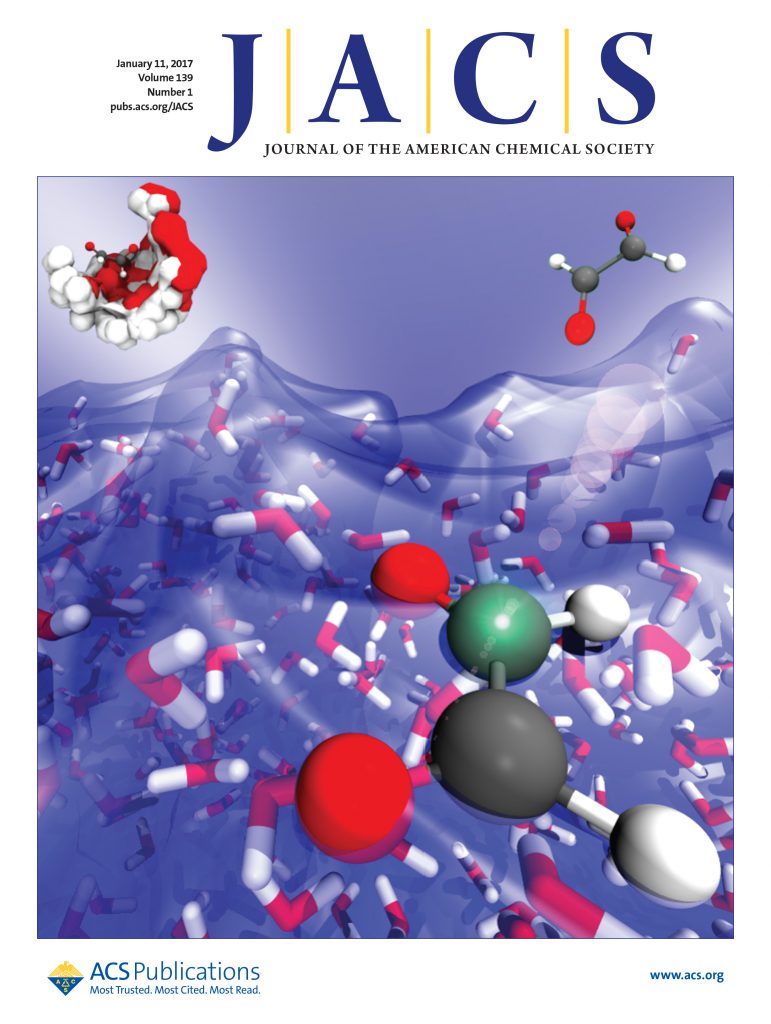Highly Efficient Assembly-Line Production of Long-Chain Hydrocarbons via Fischer–Tropsch Synthesis over Ru/TiO2 Catalysts
IF 15.6
1区 化学
Q1 CHEMISTRY, MULTIDISCIPLINARY
引用次数: 0
Abstract
The assembly-line strategy serves as an effective way for optimizing tandem steps in the fields of enzyme catalysis and homogeneous catalysis. Herein, we rationally construct efficient Ru/TiO2 catalysts for an important industrial heterogeneous reaction of Fischer–Tropsch synthesis (FTS), involving CO dissociation, hydrogenation, and C–C coupling complex processes. These catalysts feature an “assembly-line” structure composed of oxygen vacancies (Ov), interfacial Ru (RuIδ+ at RuIδ+–Ov–Ti3+), and exposed Ru (RuE0) sites. Both experimental and theoretical results demonstrate that RuIδ+ sites with the assistance of Ov primarily contribute to CO dissociation and hydrogenation to C1 monomers (workshop 1), while RuE0 sites predominantly drive the above intermediates to C–C coupling for carbon chain growth (workshop 2). We interestingly discover that besides the performance of the two workshops themselves, their efficient coordination is key to improve the activity and long-chain hydrocarbon selectivity in FTS. Optimizing this trisite catalytic system via tuning the prereduction time of the TiO2 support robustly achieves an ultrahigh FTS activity (180.8 molCO molRu–1 h–1) while maintaining an impressive C5+ selectivity (90.1%), outperforming the vast majority of state-of-the-art Ru-based FTS catalysts. This work not only clearly clarifies the synergistic mechanisms of multiple active sites but also offers valuable guidance for the application of the assembly-line strategy in complex heterogeneous catalysis reactions.

Ru/TiO2催化剂上费托合成长链烃的高效流水线生产
在酶催化和均相催化领域,装配线策略是优化串联步骤的有效途径。在此,我们合理构建了高效的Ru/TiO2催化剂,用于fisher - tropsch合成(FTS)中一个重要的工业非均相反应,包括CO解离、加氢和C-C偶联复杂过程。这些催化剂具有“装配线”结构,由氧空位(Ov),界面Ru (RuIδ+在RuIδ+ -Ov-Ti3 +)和暴露的Ru (RuE0)位点组成。实验和理论结果均表明,在Ov的辅助下,RuE0位点主要促进CO解离和加氢生成C1单体(车间1),而RuE0位点主要驱动上述中间体进行C-C偶联以促进碳链生长(车间2)。我们有趣地发现,除了两个车间本身的性能外,它们的有效配合是提高FTS活性和长链烃选择性的关键。通过调整TiO2载体的预还原时间来优化该三价催化体系,获得了超高的FTS活性(180.8 molCO molRu-1 h-1),同时保持了令人印象深刻的C5+选择性(90.1%),优于绝大多数最先进的ru基FTS催化剂。这项工作不仅清楚地阐明了多活性位点的协同作用机制,而且为流水线策略在复杂非均相催化反应中的应用提供了有价值的指导。
本文章由计算机程序翻译,如有差异,请以英文原文为准。
求助全文
约1分钟内获得全文
求助全文
来源期刊
CiteScore
24.40
自引率
6.00%
发文量
2398
审稿时长
1.6 months
期刊介绍:
The flagship journal of the American Chemical Society, known as the Journal of the American Chemical Society (JACS), has been a prestigious publication since its establishment in 1879. It holds a preeminent position in the field of chemistry and related interdisciplinary sciences. JACS is committed to disseminating cutting-edge research papers, covering a wide range of topics, and encompasses approximately 19,000 pages of Articles, Communications, and Perspectives annually. With a weekly publication frequency, JACS plays a vital role in advancing the field of chemistry by providing essential research.

 求助内容:
求助内容: 应助结果提醒方式:
应助结果提醒方式:


